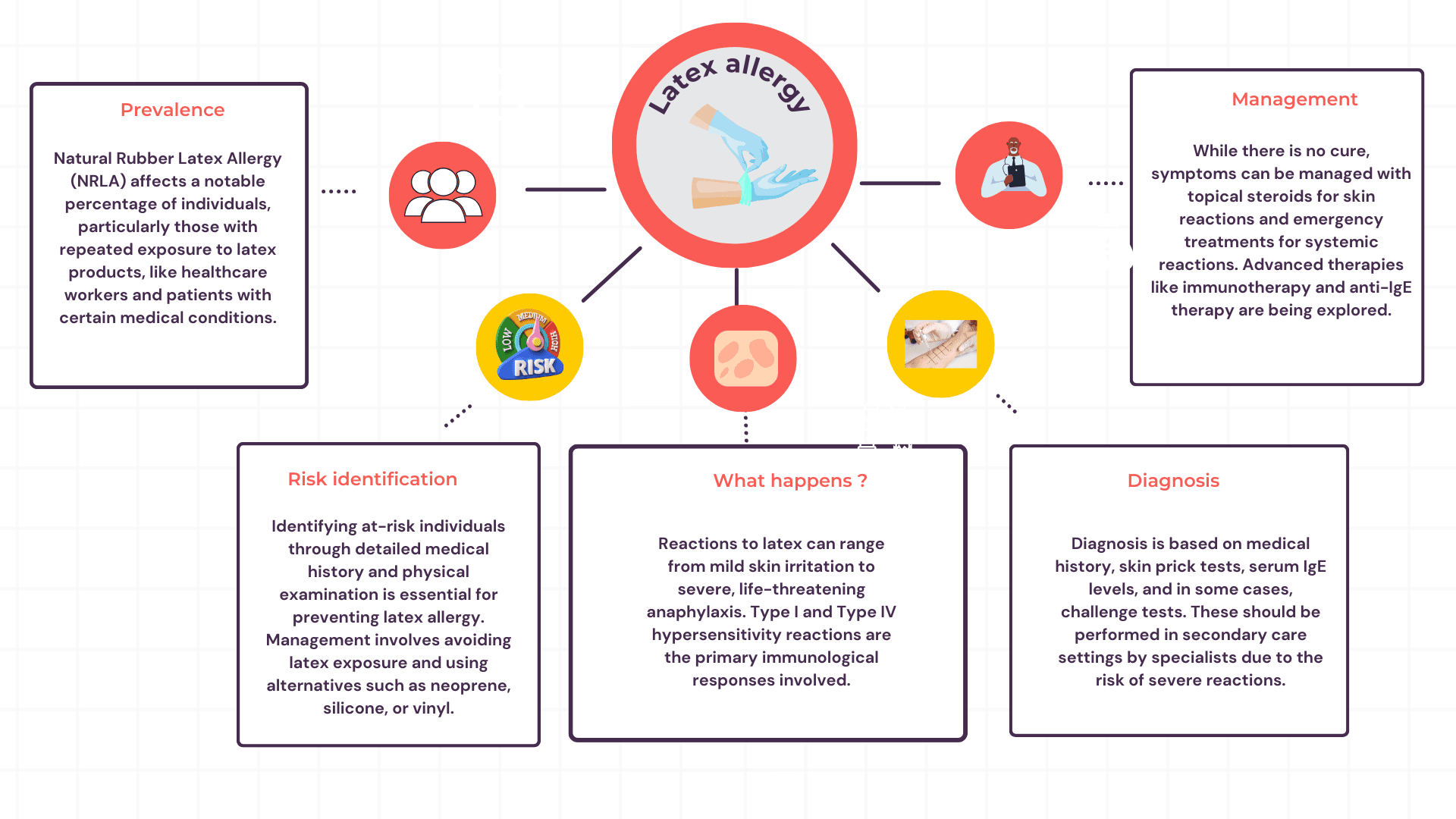Download A4Medicine Mobile App
Empower Your RCGP AKT Journey: Master the MCQs with Us!

Latex allergy is an important clinical concern characterized by a hypersensitive reaction to natural rubber latex (NRL) proteins. This allergy has gained prominence with the widespread use of latex products, particularly within medical settings. NRL is harvested from the sap of the Hevea brasiliensis tree and is a common component in numerous medical devices and everyday products. The heightened use of latex gloves as a universal precaution in infection control, along with increased exposure through various medical procedures, has led to a rise in the incidence of latex allergy.
The clinical manifestations of latex allergy can range from mild skin irritations to severe systemic reactions, including life-threatening anaphylaxis. Two primary types of hypersensitivity reactions are associated with this allergy: immediate (Type I) and delayed (Type IV). The former is mediated by immunoglobulin E (IgE) and can lead to rapid onset of symptoms upon exposure to latex, while the latter involves a cell-mediated response that typically presents as contact dermatitis. The upcoming table summarizes key aspects of latex allergy, including its sources, clinical presentations, at-risk groups, and the pathophysiological underpinnings of this hypersensitive condition.
| Aspect | Details |
|---|---|
| Source of Latex | Natural Rubber Latex (NRL) derived from the Hevea brasiliensis tree. Commonly utilized... |
Try our Free Plan to get the full article.